30th Anniversary Celebration Interview and Sale: Part Final
Mike Allen / Friday, September 30th, 2022 / No Comments »Six dark fantasy and horror titles
discounted to 99¢
for an early Halloween start
See a map of how my stories and upcoming novel connect
Read the beginning of my 30th anniversary interview
Read the second part of the interview
Read part three
Reflecting on your published works, what pieces are you most proud of? What pieces do you still think about reworking?
It’s hard to pick favorites: so many of these pieces represent some sort of milestone, little or huge, at least to me.
An obvious choice is “The Button Bin,” which remains, fifteen years after Lawrence Watt-Evans first picked it for publication in Helix, the story of mine that has caused the biggest stir. Any time a creepy image involving buttons starts making the rounds, I’m going to get tagged, it’s inevitable. (It had not occurred to me until typing this paragraph just now that the “The Button Bin” came out right at the midpoint of these thirty years — fascinating!)
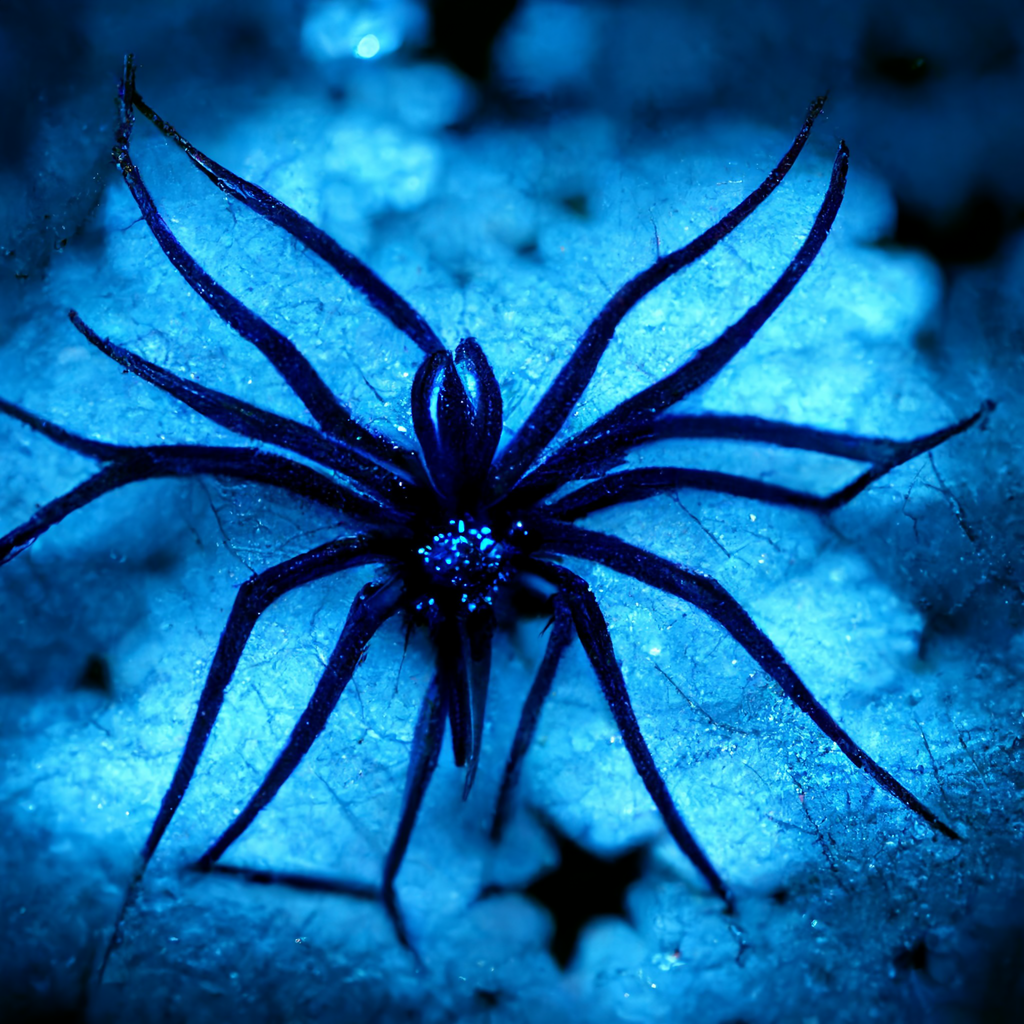
Inspired by “The Spider Tapestries”
Another story that came out in 2007, a fateful year for me, was “The Hiker’s Tale,” which served as the seed that grew into my dark fantasy novel Trail of Shadows, which Broken Eye Books plans to unleash next year. Both of those stories took a long time to gestate, and both have generated multiple sequels, prequels and spin-offs. (As the map shows!)
I’d be remiss if I did not take a moment to plug “The Sun Saw,” which in July at last became available in the anthology wherein it was intended to debut, The Leaves of a Necronomicon, edited by the late, great Joseph S. Pulver, Sr. The publisher, Chaosium, generously let me use the story in my Aftermath of an Industrial Accident collection in 2020. There’s a character in “Sun Saw,” John Hairston, who has seen a lot of action in other stories since I first thought him up.
Regarding reworking, any story can benefit from further tweaking. In the run-up the publication of Unseaming, Thomas Ligotti himself advised me to use the republication of stories in a collection as an opportunity to further refine them. All of them.
If there’s project I’d love to have another go at, its my debut novel, The Black Fire Concerto, which came out in 2013. Not because I would want to make major changes to it — some more polish would not hurt, but my heroines, my villains and villainesses, my ravening ghouls, my surreal settings, my gory set pieces, my loopy over-the-top magic feats, all embody what I was aiming for, a kind of madcap zombie-fic tribute to the likes of Michael Moorcock and Roger Zelazny.
But I had plans for the book to be the start of a four-book series. (In fact, the second book, The Ghoulmaker’s Aria, exists as a complete first draft, and I know the titles of books three and four.) However, the publishing imprint that brought out Black Fire Concerto folded almost as soon as it opened and my novel shot so deep under the radar sales-wise that I concluded that I could not justify the time investment it would have taken to complete the series. What’s heartbreaking is that Black Fire does have a few fans who still ask me from time to time about the next installment. I dream of someday having a window of free time to complete the series and mount a proper large-scale re-launch.
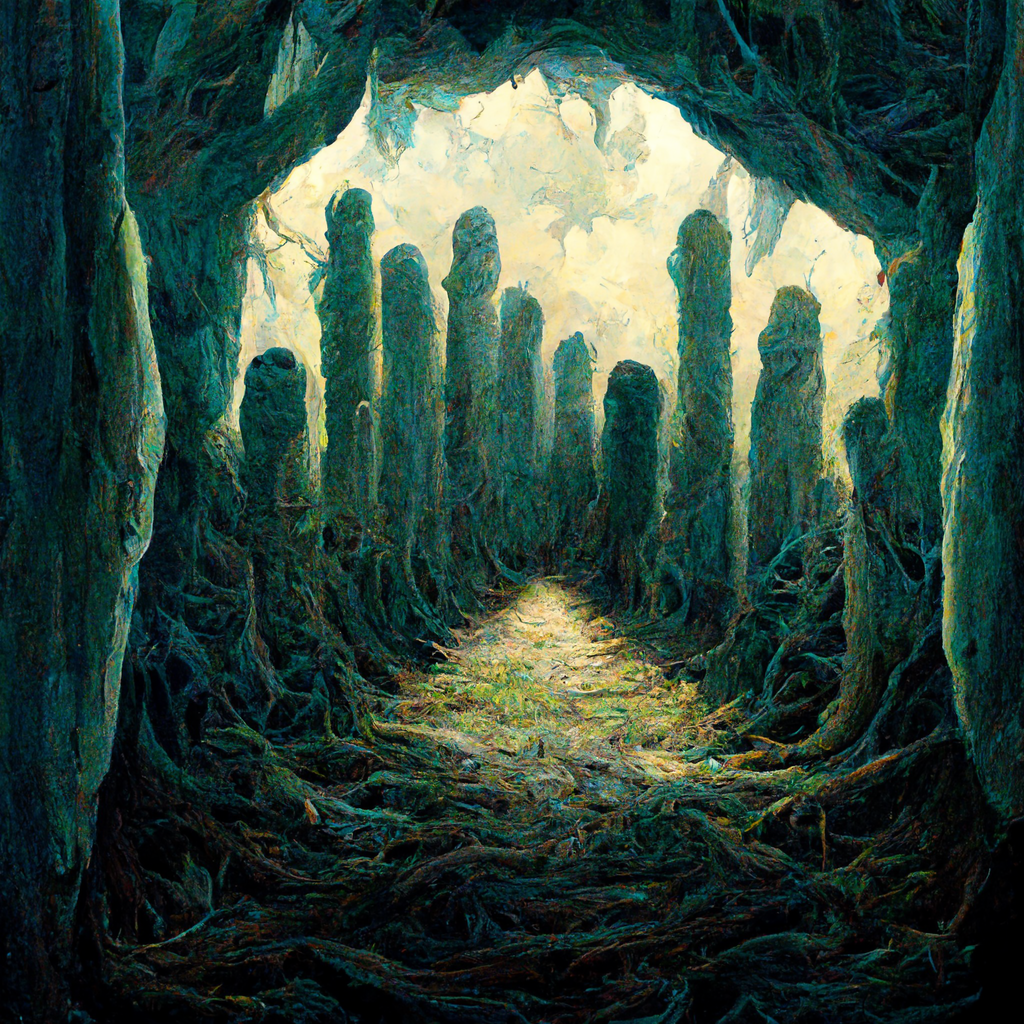
Inspired by “The Spider Tapestries”
Speaking of reworking, does your process differ from the start of a project versus how you edit completed drafts?
In my experience every piece demands a different process; there is no One Right Way. Given that, I’m going to answer this question more generally.
The single most important step in writing any work of fiction — though it applies to all types of writing, but I feel its especially important to stress this with novels and stories: finish the first draft. Get to the end. Do whatever you have to do to make that happen. You will never see your work in print if you never finish it.
A technique that I co-opted and swear by is the “three-sentence rule,” because “a thousand words a day” is out of reach for many of us who write as a side hustle. The “three-sentence rule” is simple: no matter how tired or busy you are, you can always add three sentences to a work in progress. Some days that is all you will manage. Some days you’ll catch fire and write a lot more.
Once you have that complete draft, that is your clay. You can take however long you want to shape it however you like. Feedback from a few trusted beta readers who you can handle criticism from can be a huge help. Once again, you have to walk that balance beam, staying true to your vision while recognizing that the jewel in your head might on the page still be a lumpy rock.
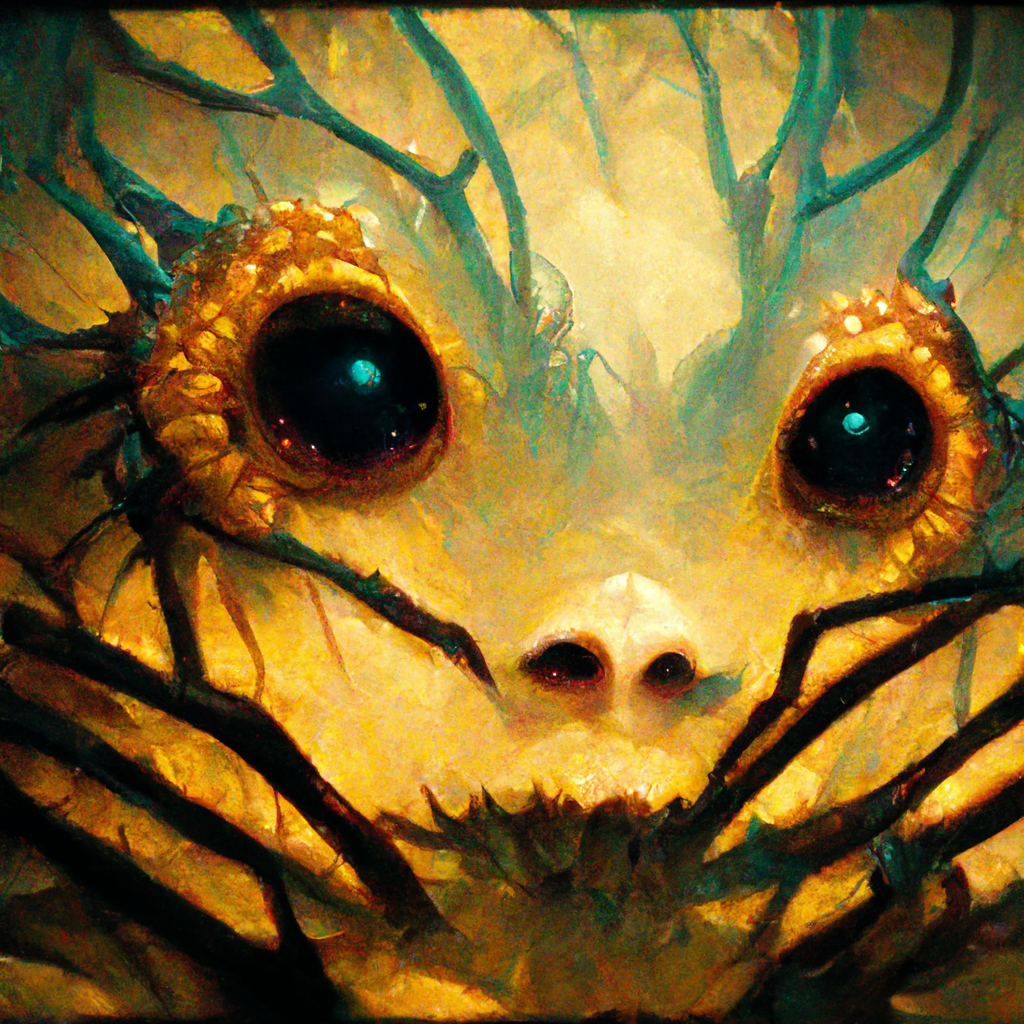
Inspired by “The Spider Tapestries”
Since I’ve gone into armchair vizier mode here, I want to add, for whomever might see this; if you decide to write a novel, you would benefit from doing research into how the various processes for seeing a novel through into print work in current times — before you start, even. There’s nothing like spending two years on a project and then learning that all your assumptions about how the business works — assumptions that you based major creative choices on — are wrong.
If you had to pick a central theme or style throughout your work, what might that be?
I’m most comfortable not sticking to a single style. “The Button Bin” drew some gripes because I wrote it in second-person present tense, which for some readers is apparently equivalent to having a suit put on inside out and backwards. “Let There Be Darkness” (collected in Unseaming) is written in future tense. “The Cruelest Team Will Win” (collected in Aftermath) gets told in straightforward first person colloquial voice. I have high fantasy stories, science fiction stories, gritty noir stories, subtle stories, extreme stories. Whatever the performance requires.
I’m definitely drawn to the dark and disturbing, though, whatever style I happen to be working in. I suppose that was true with my poetry as well, though it emerged in smaller doses. I mean, I didn’t think of my poetry entirely in those terms, as I definitely produced verse I thought were light, but look at how Amal El-Mohtar chose to describe my poetry in her introduction to Hungry Constellations:
“Let me tell you about Mike Allen’s poetry. This is a man who delights in breaking bodies: butchering, splitting, flaying, dismembering, then seeding landscapes with viscera until they too become bodies—bodies invaded, bodies stuffed, bodies contaminated. This is a man who carves words into and out of bodies, be they skin or sapphire, corpses or constellations. But somehow Allen skirts gore and clinical detachment both: there is a precision and an economy to his horror that’s reminiscent of clockwork, architecture, astronomy. Imagine a clock with bone-gears, a skin-tree growing liver-fruit, a ship knifing a face into the moon, and you’ll have something of a sense of what lies before you.”
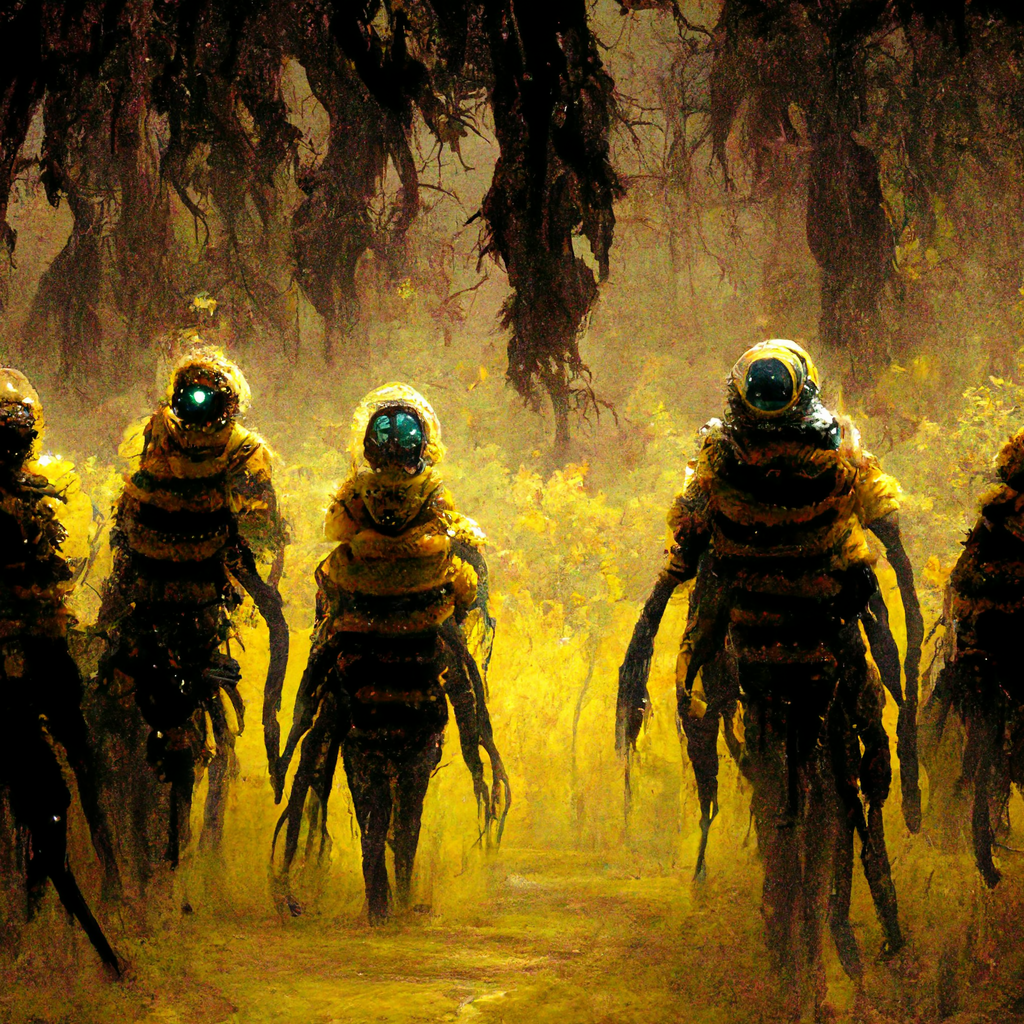
Inspired by “The Spider Tapestries”
Back in 2007, as part of a promotion for Weird Tales during the years when Ann VanderMeer was editor, I wrote an essay trying to explain “the Fascination of the Abomination,” which I am hardly the only author to exhibit:
“It’s almost as if the author is acting on a spiritual dare: take the worst truth you can imagine, and I will show you that things can be far worse, that the core of your being is not equipped, can never be equipped to cope with the worst that’s out there, even the worst that’s inside you. And I will dare to entertain you, not so much by what I tell you, but how I tell it. (And this is how, perhaps, those of us who have the Fascination transmute it into something we can manage? I can’t really claim to know the answer.)”
I believe that’s the game I am still playing.
How did starting Mythic Delirium impact your personal writing career?
My unexpected career as an editor and publisher helped me in the networking department, I suppose you could say, in that it had the unexpected side benefit of giving me reason to meet people I otherwise might not have.
I guess as one example: when Mythic Delirium became part of the DNA Publications stable, that first issue under new management included a poem by Ian Watson, a prolific sf novelist from across the pond who was in a phase of his writing life where he was producing a lot of poems. My debut poetry chapbook, Defacing the Moon, also came out under the DNA banner about the same time, and Ian, on reading and liking it, pitched one of his own, which I ended up editing, The Lexicographer’s Love Song, and that led to us collaborating as writers on things like the kooky novelette “Dee-Dee and the Dumpy Dancers” that appeared in Interzone (collected in Ian’s Saving for a Sunny Day) and the poem “TimeFlood” that Gardner Dozois published in Asimov’s Science Fiction (collected in Hungry Constellations) and which I still think is one of the best and wildest pieces of writing with my name attached to it, period. Another example of collaborative work I’m super-proud of would be “The King of Cats, the Queen of Wolves” written with my friends Sonya Taaffe and Nicole Kornher-Stace, originally published by Apex Magazine when Catherynne M. Valente was editor, and also collected in Hungry Constellations.
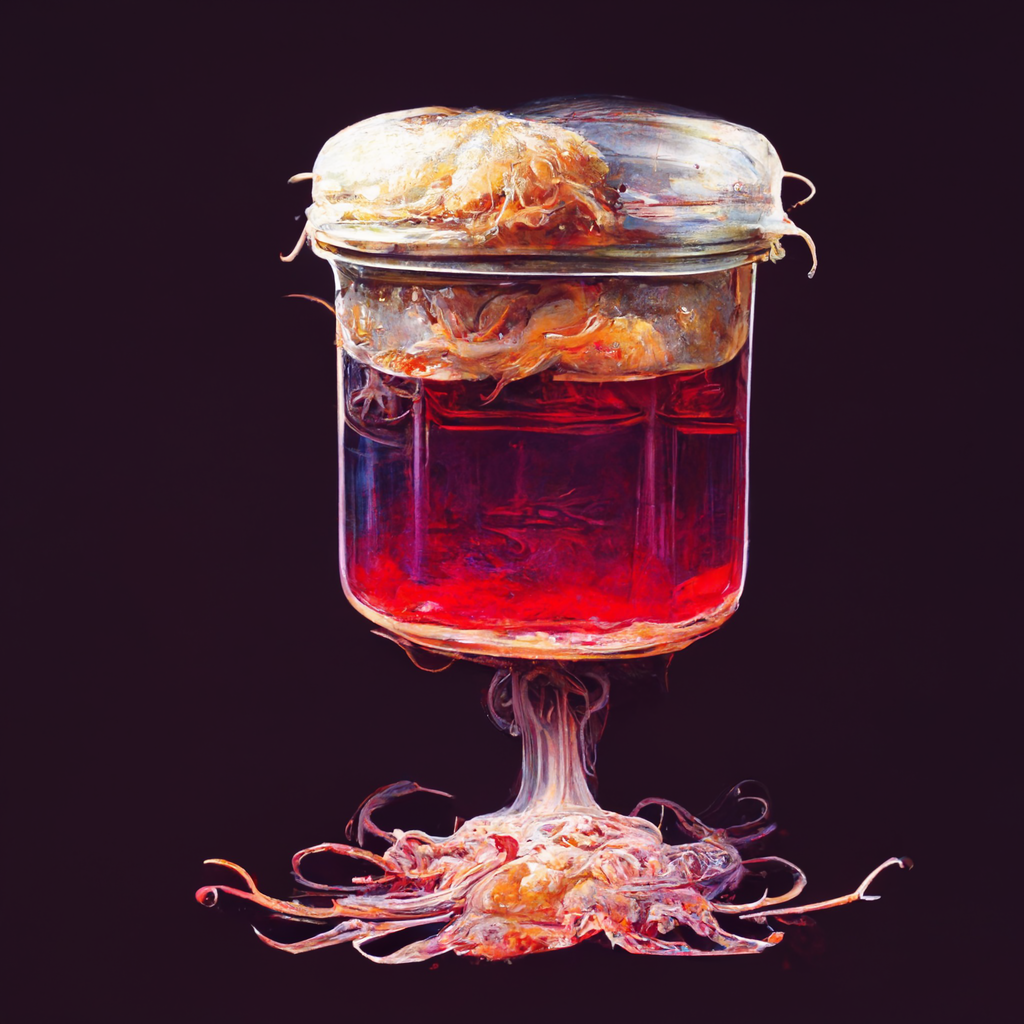
Inspired by “The Spider Tapestries”
Many of the creative partnerships in my life began with Mythic Delirium or projects that started under or ended up under the Mythic Delirium Books umbrella. I told the story of Mythic Delirium in some detail in the editorial that introduced the final digital issue of the zine, and as Mythic Delirium as a venture turns 25 next year, I expect to share even more as I, while wearing my publisher hat, line a bunch of new book releases and projects up to celebrate that silver anniversary.
What is your most recent publication? What are you currently working on?
Not counting the latest piece written for my day job at the Roanoke Times (which as of this writing happens to be an editorial about the idiotic “Little Mermaid” movie controversy), my most recent publication would be my sci-fi horror story “Matres Lachrymarum” in the April issue of Cosmic Horror Monthly. I have to say, the folks behind this magazine are doing something right, because I got a pretty big positive public response from that story, or at least what counts as one on the scale I work in.
“Matres” is a sort of sequel to “Drift from the Windrows,” a story I wrote for Broken Eye Books’ Tomorrow’s Cthulhu anthology that has since been included in my Aftermath collection. Invites to play in H.P. Lovecraft’s universe are fun; I prefer not to name-drop all his made up monsters and gods and instead let the reader infer what beings might be manifesting from the things my characters see and experience.
I have drafted a couple of new stories that, once they see print, will add a couple more polygons to the story map. One is a Hierophant story, one is a Hairston tale.
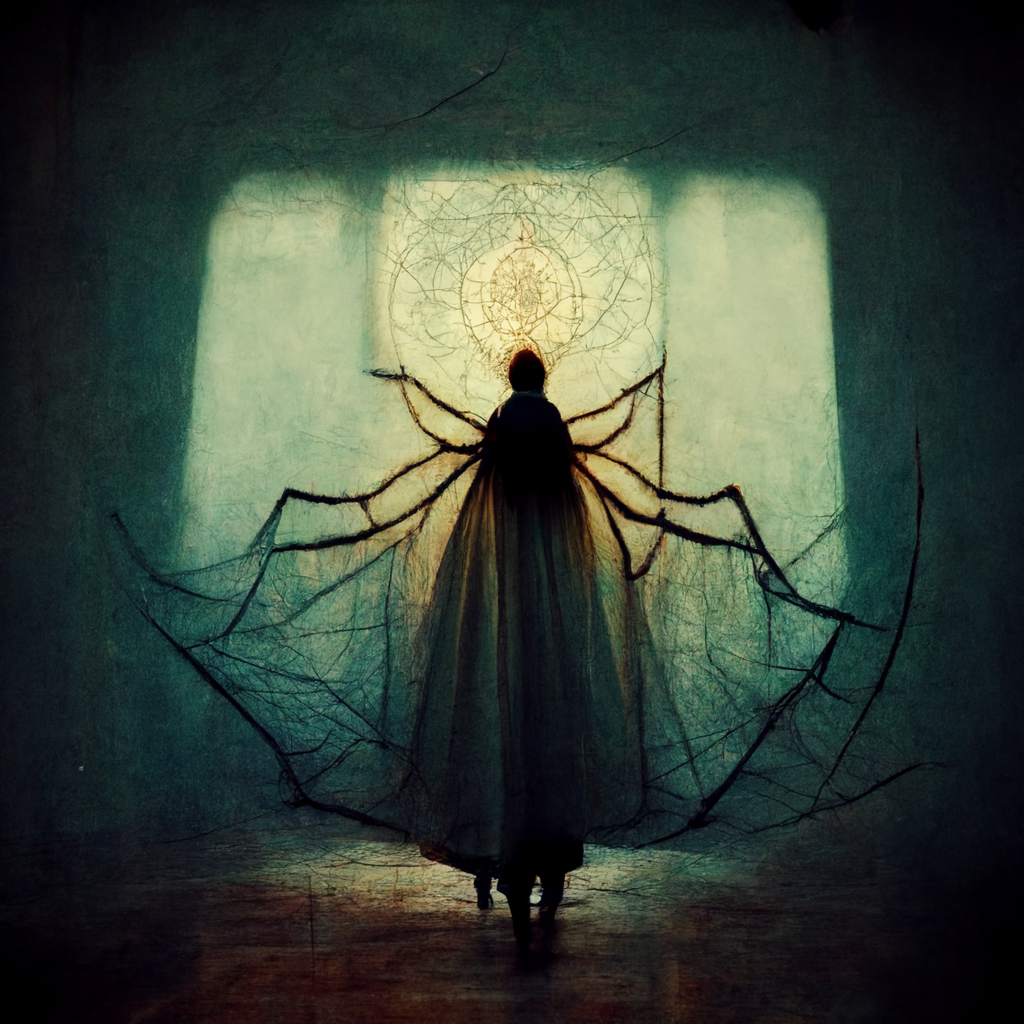
Inspired by “The Spider Tapestries”
What I’m most excited about though is the release of my next novel, Trail of Shadows. I’m incredibly grateful to Broken Eye Books publisher Scott Gable for granting a home to this wayward monster of a book, which has been with me, evolving in fits and starts, for many years.
Trail of Shadows grew from my short story “The Hiker’s Tale” (included in Unseaming) and its novelette sequel “Follow the Wounded One” (included in Aftermath of an Industrial Accident). To share a little secret, “The Cruelest Team Will Win” (also included in Aftermath) is actually a sequel to Trail of Shadows. “The Feather Stitch,” published last year in Lackington’s, connects the Trail of Shadows universe to my “Button Bin” stories, sewing it all together into one big scary “Allenverse,” so to speak. (You can see, on the map I made, how the strands connect.)
The few and the proud who have followed my tales in all their scattershot appearances might not have been aware of it, but the narrative of Trail of Shadows has been an unseen source of gravity, in the manner that anomalies in a planet’s orbit ultimately reveal that there’s another unseen planet exerting force from further out in the void. I’m psyched beyond words that at last I’ll get to call this dark world into the light.
Assuming I live long enough to add three more decades to my writing career, Trail of Shadows will be a great way to kick them off.
Finis
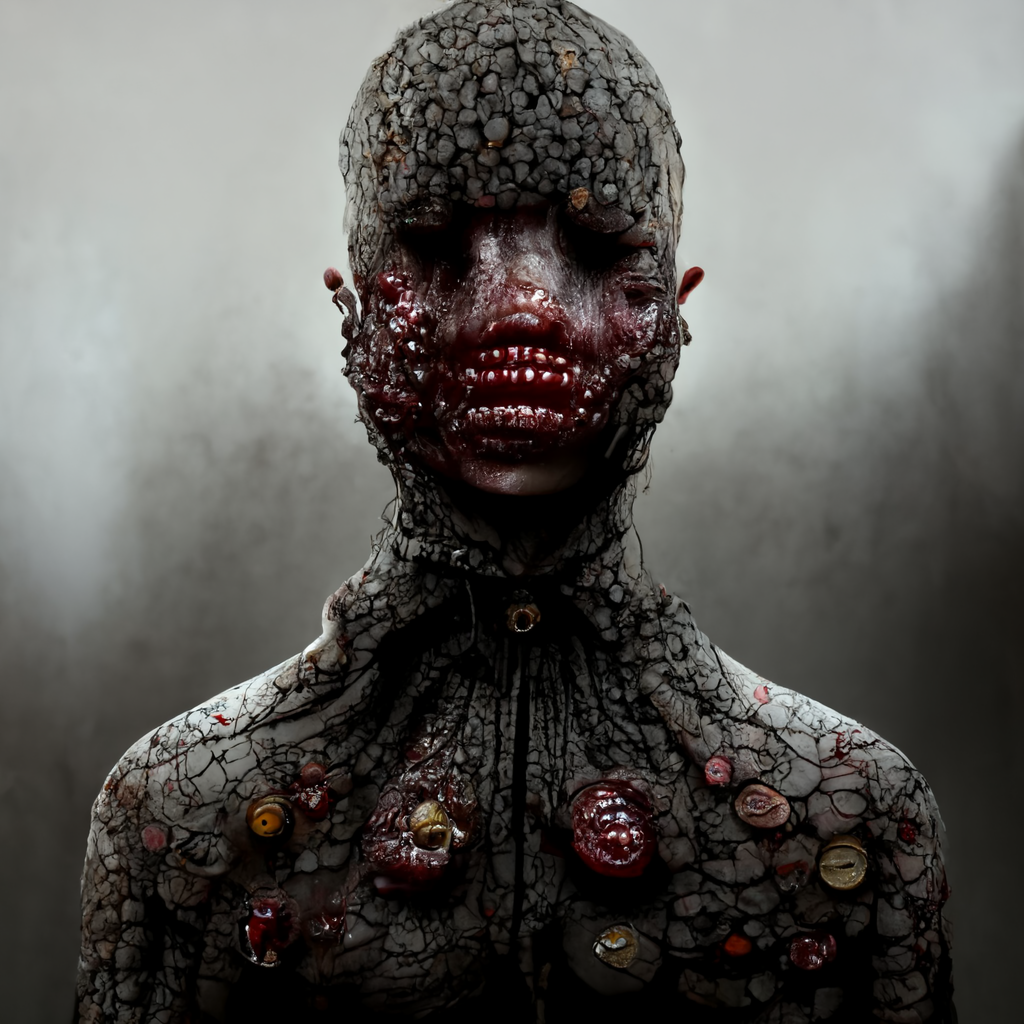
Inspired by “The Button Bin” and “The Quiltmaker”
Again, I want to thank Sydney Macias for the interview questions, and C. S. E. Cooney, Carlos Hernandez and Cassandra Khaw for these wonderful AI-generated imaginings of my worlds and monsters!
